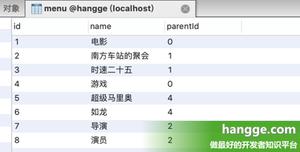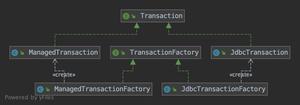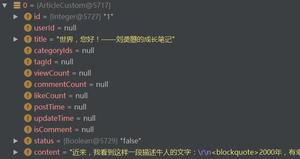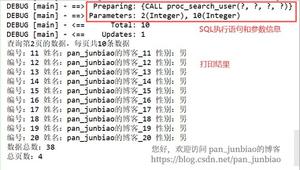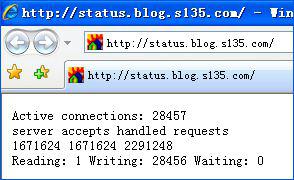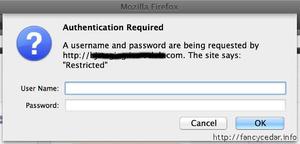Mybatis之映射实体类中不区分大小写的解决
Mybatis 映射实体类中不区分大小写
做项目时候遇到一个Bug,实体类中有两个字段,例如(addTime,addtime),进行查询搜索会发生神奇的事情
<?xml version="1.0" encoding="UTF-8"?>
<!DOCTYPE mapper PUBLIC "-//mybatis.org//DTD Mapper 3.0//EN" "http://mybatis.org/dtd/mybatis-3-mapper.dtd">
<mapper namespace="cn.runlin.jetta.mapper.JettaUpgradeLogMapper">
<resultMap id="BaseResultMap" type="cn.runlin.jetta.entity.JettaUpgradeLog">
<id column="upgrade_id" jdbcType="INTEGER" property="upgradeId" />
<result column="task_id" jdbcType="INTEGER" property="taskId" />
<result column="task_name" jdbcType="VARCHAR" property="taskName" />
<result column="task_version" jdbcType="VARCHAR" property="taskVersion" />
<result column="project_id" jdbcType="INTEGER" property="projectId" />
<result column="project_name" jdbcType="VARCHAR" property="projectName" />
<result column="project_type" jdbcType="TINYINT" property="projectType" />
<result column="dealer_id" jdbcType="INTEGER" property="dealerId" />
<result column="dealer_name" jdbcType="VARCHAR" property="dealerName" />
<result column="service_code" jdbcType="VARCHAR" property="serviceCode" />
<result column="add_time" jdbcType="TIMESTAMP" property="addTime" />
<result column="addtime" jdbcType="INTEGER" property="addtime" />
<result column="status" jdbcType="INTEGER" property="status" />
<result column="reasonname" jdbcType="VARCHAR" property="reasonname" />
</resultMap>
<sql id="Base_Column_List">
upgrade_id, task_id, task_name, task_version, project_id, project_name, project_type,
dealer_id, dealer_name, service_code, add_time, addtime
</sql>
//映射到实体类 而不使用xml文件中的BaseResultMap
<select id="getJettaUpgradeLogList" resultType="cn.runlin.jetta.entity.JettaUpgradeLog" parameterType="Map">
select
jul.upgrade_id, task_id, task_name, task_version, project_id, project_name, project_type,
dealer_id, dealer_name, service_code, add_time, status, reasonname
from jetta_upgrade_log jul
LEFT OUTER JOIN jetta_upgrade_log_status juls
ON jul.upgrade_id=juls.upgrade_id
LEFT OUTER JOIN jetta_status_code jsc
ON juls.status_id= jsc.rid
<where>
<if test="serviceCode != null and serviceCode !='' ">
AND jul.service_code like concat("%",#{serviceCode},"%")
</if>
<if test="dealerName != null and dealerName !='' ">
AND jul.dealer_name like concat("%",#{dealerName},"%")
</if>
<if test="taskVersion != null and taskVersion !='' ">
AND jul.task_version like concat("%",#{taskVersion},"%")
</if>
<if test="status != null and status !='' ">
AND juls.status like concat("%",#{status},"%")
</if>
</where>
</select>
</mapper>

会报addTime是时间戳类型,不能转换成INTEGER类型的问题。原因就是mybatis映射实体类之后,不能区分大小写,而造成字段类型对应错误的问题
解决办法
把映射实体类变成映射到xml中所设置的resultMap,就可以解决这个问题
<?xml version="1.0" encoding="UTF-8"?>
<!DOCTYPE mapper PUBLIC "-//mybatis.org//DTD Mapper 3.0//EN" "http://mybatis.org/dtd/mybatis-3-mapper.dtd">
<mapper namespace="cn.runlin.jetta.mapper.JettaUpgradeLogMapper">
<resultMap id="BaseResultMap" type="cn.runlin.jetta.entity.JettaUpgradeLog">
<id column="upgrade_id" jdbcType="INTEGER" property="upgradeId" />
<result column="task_id" jdbcType="INTEGER" property="taskId" />
<result column="task_name" jdbcType="VARCHAR" property="taskName" />
<result column="task_version" jdbcType="VARCHAR" property="taskVersion" />
<result column="project_id" jdbcType="INTEGER" property="projectId" />
<result column="project_name" jdbcType="VARCHAR" property="projectName" />
<result column="project_type" jdbcType="TINYINT" property="projectType" />
<result column="dealer_id" jdbcType="INTEGER" property="dealerId" />
<result column="dealer_name" jdbcType="VARCHAR" property="dealerName" />
<result column="service_code" jdbcType="VARCHAR" property="serviceCode" />
<result column="add_time" jdbcType="TIMESTAMP" property="addTime" />
<result column="addtime" jdbcType="INTEGER" property="addtime" />
<result column="status" jdbcType="INTEGER" property="status" />
<result column="reasonname" jdbcType="VARCHAR" property="reasonname" />
</resultMap>
<sql id="Base_Column_List">
upgrade_id, task_id, task_name, task_version, project_id, project_name, project_type,
dealer_id, dealer_name, service_code, add_time, addtime
</sql>
//映射到xml的BaseResultMap
<select id="getJettaUpgradeLogList" resultMap="BaseResultMap" parameterType="Map">
select
jul.upgrade_id, task_id, task_name, task_version, project_id, project_name, project_type,
dealer_id, dealer_name, service_code, add_time, status, reasonname
from jetta_upgrade_log jul
LEFT OUTER JOIN jetta_upgrade_log_status juls
ON jul.upgrade_id=juls.upgrade_id
LEFT OUTER JOIN jetta_status_code jsc
ON juls.status_id= jsc.rid
<where>
<if test="serviceCode != null and serviceCode !='' ">
AND jul.service_code like concat("%",#{serviceCode},"%")
</if>
<if test="dealerName != null and dealerName !='' ">
AND jul.dealer_name like concat("%",#{dealerName},"%")
</if>
<if test="taskVersion != null and taskVersion !='' ">
AND jul.task_version like concat("%",#{taskVersion},"%")
</if>
<if test="status != null and status !='' ">
AND juls.status like concat("%",#{status},"%")
</if>
</where>
</select>
</mapper>
问题解决

Mybatis的一些小细节
Mybatis要解决的问题:
1. 将sql语句硬编码到java代码中,如果修改sql语句,需要修改java代码,重新编译。系统可维护性不高。
设想如何解决?
能否将sql单独配置在配置文件中。
2. 数据库连接频繁开启和释放,对数据库的资源是一种浪费。
设想如何解决?
使用数据库连接池管理数据库连接。
3. 向preparedStatement中占位符的位置设置参数时,存在硬编码(占位符的位置,设置的变量值)
设想如何解决?
能否也通过配置的方式,配置设置的参数,自动进行设置参数
4. 解析结果集时存在硬编码(表的字段名、字段的类型)
设想如何解决?
能否将查询结果集映射成java对象。
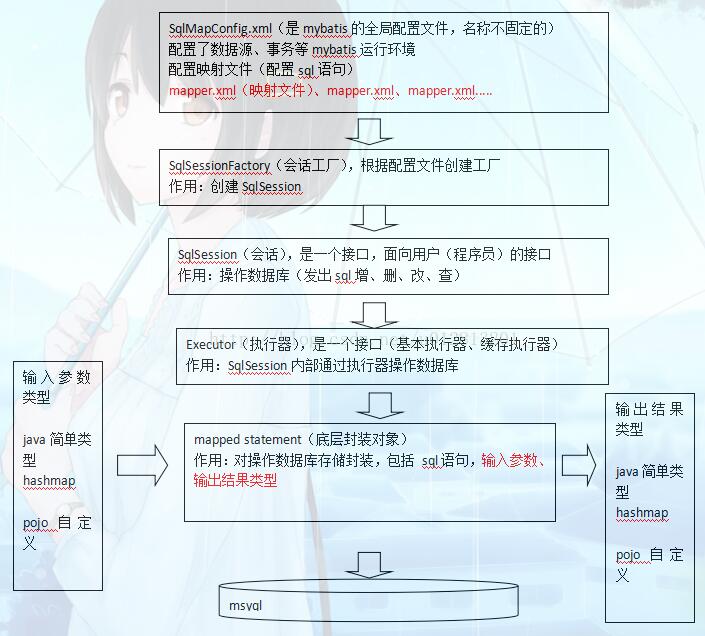
问题一. #{}和${}的区别是什么?
#{}是预编译处理,${}是字符串替换。
Mybatis在处理#{}时,会将sql中的#{}替换为?号,调用PreparedStatement的set方法来赋值;
Mybatis在处理时,就是把{}替换成变量的值。
使用#{}可以有效的防止SQL注入,提高系统安全性。
问题二. 当实体类中的属性名和表中的字段名不一样,怎么办
第1种: 通过在查询的sql语句中定义字段名的别名,让字段名的别名和实体类的属性名一致
<select id=”selectorder” parametertype=”int” resultetype=”me.gacl.domain.order”>
select order_id id, order_no orderno ,order_price price form orders where order_id=#{id};
</select>
第2种: 通过<resultMap>来映射字段名和实体类属性名的一一对应的关系
<select id="getOrder" parameterType="int" resultMap="orderresultmap">
select * from orders where order_id=#{id}
</select>
<resultMap type=”me.gacl.domain.order” id=”orderresultmap”>
<!–用id属性来映射主键字段–>
<id property=”id” column=”order_id”>
<!–用result属性来映射非主键字段,property为实体类属性名,column为数据表中的属性–>
<result property = “orderno” column =”order_no”/>
<result property=”price” column=”order_price” />
</reslutMap>
问题三. 模糊查询like语句该怎么写
string wildcardname = “smi”;
list<name> names = mapper.selectlike(wildcardname);
<select id=”selectlike”>
select * from foo where bar like "%"#{value}"%"
</select>
1.表达式: name like"%"#{name}"%" #起到占位符的作用
2.表达式: name like '%${name}%' $进行字符串的拼接,直接把传入的值,拼接上去了,没有任何问题
表达式: name likeconcat(concat('%',#{username}),'%') 这是使用了cancat进行字符串的连接,同时使用了#进行占位
表达式:name like CONCAT('%','${name}','%') 对上面的表达式进行了简化,更方便了
问题四. 通常一个Xml映射文件
都会写一个Dao接口与之对应,请问,这个Dao接口的工作原理是什么?Dao接口里的方法,参数不同时,方法能重载吗?
Dao接口,就是人们常说的Mapper接口,接口的全限名,就是映射文件中的namespace的值,接口的方法名,就是映射文件中MappedStatement的id值,接口方法内的参数,就是传递给sql的参数。
Mapper接口是没有实现类的,当调用接口方法时,接口全限名+方法名拼接字符串作为key值,可唯一定位一个MappedStatement,举例:com.mybatis3.mappers.StudentDao.findStudentById,可以唯一找到namespace为com.mybatis3.mappers.StudentDao下面id = findStudentById的MappedStatement。在Mybatis中,每一个<select>、<insert>、<update>、<delete>标签,都会被解析为一个MappedStatement对象。
Dao接口里的方法,是不能重载的,因为是全限名+方法名的保存和寻找策略。
Dao接口的工作原理是JDK动态代理,Mybatis运行时会使用JDK动态代理为Dao接口生成代理proxy对象(如使用spring会注入到容器中),代理对象proxy会拦截接口方法,转而执行MappedStatement所代表的sql,然后将sql执行结果返回。
问题五. Mybatis是如何将sql执行结果封装为目标对象并返回的
都有哪些映射形式?
答:第一种是使用<resultMap>标签,逐一定义列名和对象属性名之间的映射关系。
第二种是使用sql列的别名功能,将列别名书写为对象属性名,比如T_NAME AS NAME,对象属性名一般是name,小写,但是列名不区分大小写,Mybatis会忽略列名大小写,智能找到与之对应对象属性名,你甚至可以写成T_NAME AS NaMe,Mybatis一样可以正常工作。
有了列名与属性名的映射关系后,Mybatis通过反射创建对象,同时使用反射给对象的属性逐一赋值并返回,那些找不到映射关系的属性,是无法完成赋值的。
问题六. 如何获取自动生成的(主)键值
insert 方法总是返回一个int值 - 这个值代表的是插入的行数。
而自动生成的键值在 insert 方法执行完后可以被设置到传入的参数对象中。
示例:
<insert id="insertUserMessage" parameterType="com.xxx.xxx.model.UserMessage"
useGeneratedKeys="true" keyProperty="userMessage.id">
insert into my_news
(orderid,commentid,type,title,content,createtime)
values
(#{userMessage.orderid},#{userMessage.commentid},#{userMessage.type},#{userMessage.title}
,#{userMessage.content},#{userMessage.createtime})
</insert>
这里需要注意的是需要把实体类传进来。keyProperty为自增的id字段。调用insert后自动将自增id赋值进insert调用的实体类中
//新建对象
UserMessage userMessage = new UserMessage();
userMessage.setXxxxxx(xxxxxx);
userMessageDao.insertUserMessage(userMessage);
//这时userMessage.getId()就可以获取到自增主键了
BigInteger id = userMessage.getId();
问题七. 在mapper中如何传递多个参数
第1种:
//DAO层的函数
Public UserselectUser(String name,String area);
//对应的xml,#{0}代表接收的是dao层中的第一个参数,#{1}代表dao层中第二参数,更多参数一致往后加即可。
<select id="selectUser"resultMap="BaseResultMap">
select * fromuser_user_t whereuser_name = #{0} anduser_area=#{1}
</select>
第2种: 使用 @param 注解:
import org.apache.ibatis.annotations.param;
public interface usermapper {
user selectuser(@param(“username”) string username,
@param(“hashedpassword”) string hashedpassword);
}
然后,就可以在xml像下面这样使用(推荐封装为一个map,作为单个参数传递给mapper
<select id=”selectuser” resulttype=”user”>
select id, username, hashedpassword
from some_table
where username = #{username}
and hashedpassword = #{hashedpassword}
</select>
问题八. Mybatis动态sql是做什么的
都有哪些动态sql?能简述一下动态sql的执行原理不?
Mybatis动态sql可以让我们在Xml映射文件内,以标签的形式编写动态sql,完成逻辑判断和动态拼接sql的功能。
Mybatis提供了9种动态sql标签:trim|where|set|foreach|if|choose|when|otherwise|bind。
其执行原理为,从sql参数对象中计算表达式的值,根据表达式的值动态拼接sql,以此来完成动态sql的功能。
比如:
<select id="findUserById" resultType="user">
select * from user where
<if test="id != null">
id=#{id}
</if>
and deleteFlag=0;
</select>
问题九. Mybatis的Xml映射文件中
不同的Xml映射文件,id是否可以重复?
不同的Xml映射文件,如果配置了namespace,那么id可以重复;如果没有配置namespace,那么id不能重复;毕竟namespace不是必须的,只是最佳实践而已。
原因就是namespace+id是作为Map<String, MappedStatement>的key使用的,如果没有namespace,就剩下id,那么,id重复会导致数据互相覆盖。有了namespace,自然id就可以重复,namespace不同,namespace+id自然也就不同。
问题十. 为什么说Mybatis是半自动ORM映射工具
它与全自动的区别在哪里?
Hibernate属于全自动ORM映射工具,使用Hibernate查询关联对象或者关联集合对象时,可以根据对象关系模型直接获取,所以它是全自动的。而Mybatis在查询关联对象或关联集合对象时,需要手动编写sql来完成,所以,称之为半自动ORM映射工具。
问题十一. 一对一、一对多的关联查询
<mapper namespace="com.lcb.mapping.userMapper">
<!--association 一对一关联查询 -->
<select id="getClass" parameterType="int" resultMap="ClassesResultMap">
select * from class c,teacher t where c.teacher_id=t.t_id and c.c_id=#{id}
</select>
<resultMap type="com.lcb.user.Classes" id="ClassesResultMap">
<!-- 实体类的字段名和数据表的字段名映射 -->
<id property="id" column="c_id"/>
<result property="name" column="c_name"/>
<association property="teacher" javaType="com.lcb.user.Teacher">
<id property="id" column="t_id"/>
<result property="name" column="t_name"/>
</association>
</resultMap>
<!--collection 一对多关联查询 -->
<select id="getClass2" parameterType="int" resultMap="ClassesResultMap2">
select * from class c,teacher t,student s where c.teacher_id=t.t_id and c.c_id=s.class_id and c.c_id=#{id}
</select>
<resultMap type="com.lcb.user.Classes" id="ClassesResultMap2">
<id property="id" column="c_id"/>
<result property="name" column="c_name"/>
<association property="teacher" javaType="com.lcb.user.Teacher">
<id property="id" column="t_id"/>
<result property="name" column="t_name"/>
</association>
<collection property="student" ofType="com.lcb.user.Student">
<id property="id" column="s_id"/>
<result property="name" column="s_name"/>
</collection>
</resultMap>
</mapper>
以上为个人经验,希望能给大家一个参考,也希望大家多多支持。
以上是 Mybatis之映射实体类中不区分大小写的解决 的全部内容, 来源链接: utcz.com/p/251067.html


